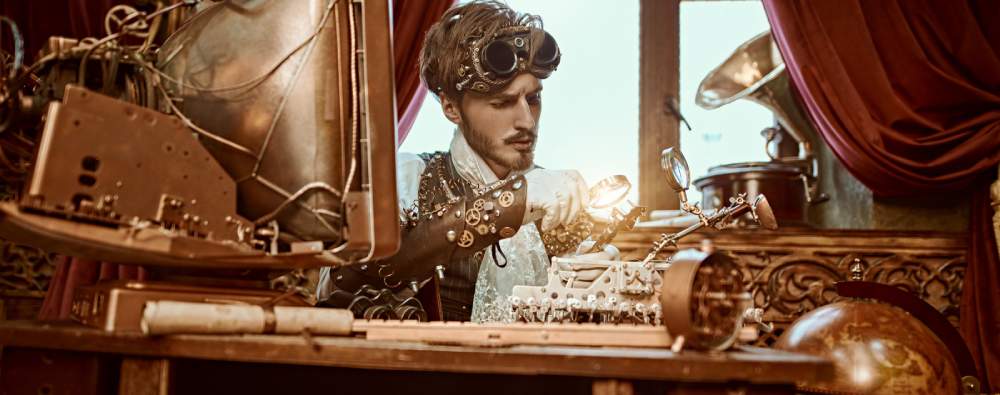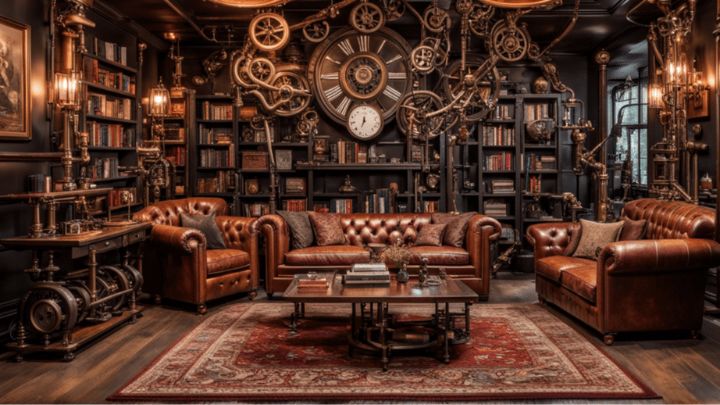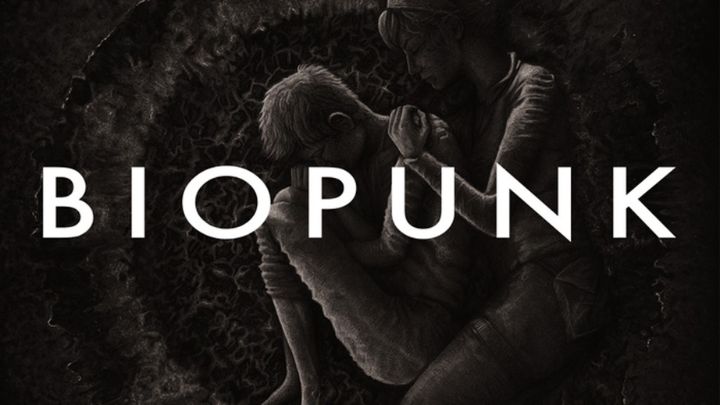Why is Steampunk so popular?
Steampunk can be confusing to those who have never heard of it. What is so fascinating about Victorian-era science fiction? How did a particular world become a genre in its own right? Whatever the case, there's no denying the popularity of the term Steampunk, with numerous movies, video games, fashion items and an impressive amount of books.
What is Steampunk?

Steampunk is a type of science fiction that imagines advanced steam technology in an alternate industrial revolution or with the stereotypical characteristics of the time. Steampunk worlds usually focus on Western society, most often in Victorian England, belle époque France, or sometimes in the Wild Wild West.
Visual Steampunk is inspired by an industrial aesthetic where brass, cogs, clocks and, of course, steam are central to the "look" as well as formal 19th-century Western fashion. One can add archetypes like the mad scientist or the zeppelin pilot...
Steampunk novels often focus on alternate history, uchronies, emphasizing real-life inventors such as Nikolai Tesla or Charles Babbage to explain "advanced" technologies such as airplanes and computers that run on steam engines. This literary genre also features reevisited characters such as Sherlock Holmes, Dr. Jekyll or Dracula.
Now that you're a little more familiar with the concept, let's get started on why is steampunk so popular!
1. Steampunk is a mix of historical and science fiction elements

Steampunk is a fascinating genre, in that it has evolved from forward-looking speculative fiction to nostalgic science fiction. The roots of science fiction are in the works of H.G. Wells and Jules Verne in books such as War of the Worlds and Twenty Thousand Leagues Under the Sea. In these books, the 19th-century authors imagine futuristic devices that arrived earlier, impressive in their capabilities but almost possible for the time.
Verne's Captain Nemo, for example, is the captain of the Nautilus, a submarine whose capabilities far exceed those of any craft that existed at the time. In his comic book The League of Extraordinary Gentlemen, Alan Moore brilliantly describes Nemo as a "pirate of science".
Steampunk has both a factual and fictional basis through this process, a pseudo-historical origin that gives it a tangible claim to legitimacy.
Steampunk feels real because it comes from a truthful place. Authors can reimagine Victorian society, but they do so by combining the benefit of hindsight with the authentic attitudes of the time.
No matter what you write, that central reality is there. In George R.R. Martin's A Song of Ice and Fire, the author sets up an exciting battle for power and is riddled with situations from actual historical events. Human beings are temperamental and unpredictable, but we all recognize true human behavior when we see it.
Historical context isn't the only thing that makes Steampunk so satisfying; there's also the inherent logic of the genre.
2. The love for old mechanisms

Clockwork plays a big role in steampunk technology, and it's not just because it's beautiful. There is something in clockwork that humans find understandable. The cogs move, and even if we don't understand the intricacies, we can see that this is how a device works. Likewise, steam power produces satisfying amounts of noise, large spurts of steam from huge devices, matching what we think a huge machine should produce.
Contrast that with today's technology, silent electricity and unfathomable chips, and you can see what Steampunk offers. As fantastic as it sounds, Steampunk makes sense. Machines operate in a way that often feels more real than our own world.
Coupled with a strict, rule-based Victorian society, this technology creates a world that even the most recent reader feels like they understand instantly.
Robert Rankin often uses Steampunk in his fiction, but he uses it as a base effect for much stranger ideas. Mermaids and aliens make frequent appearances yet are somehow more acceptable, surrounded by clockwork. The world feels reliable enough to enhance the reader's ability to suspend disbelief. They know that everything works, they can see that everything works, so this new twist must also make sense.
The lesson for authors is that it pays to allow the reader to feel a little comfortable. Whether it's the characters, the world or the style, allowing the reader to learn one aspect of the story will increase their willingness and ability to accept the rest.
J.K. Rowling's Harry Potter series uses a similar process. Harry may live in a magical world of monsters and wizards, but he is a mundane character steeped in our own recognizable world. He becomes an element of normalcy whose presence makes the fantastic events less ridiculous. We believe in the character and are therefore more likely to believe the events he witnesses.
For a reader to buy into an aspect of the story, they must first understand it. Steampunk logic is tied to its history. We believe that clocks and steam work because we know, vaguely, that they do. They are real elements of our historical past. In the same way, basing characters on real emotional drives and defining characteristics will create a powerful resonance to which the reader will respond.
3. Steampunk aesthetics are spectacular

The Steampunk look is unique. It combines the fun gadgets of science fiction with the ornate formality of the 19th century for the best of both worlds. As a genre, Steampunk has the same charm as a deliberately overcomplicated Rube Goldberg machine.
It's the design trend we all love. Steampunk has established itself as a creative style, a fashion statement, a literary genre and an excuse to wear goggles with absolutely everything. And let's face it: who doesn't want to wear goggles?
Steampunk combines the Victorian era and its fantastic technology with pure imagination. Take lace and velvet, wear a corset and your goggles (for velocipede rides) and combine copper steam engines with a healthy dose of creativity. You'll find yourself in the recognizable universe of Steampunk. Based on just enough realism to create a genre, rather than a loose conglomeration of styles and ideas, yet open enough to allow for all sorts of experimentation and creativity.

Steampunk has been around officially since the mid-1980s and continues to find an audience. What is it about Steampunk that makes it stand up to the decades, and what has given it increased visibility recently?
One possibility is that Steampunk style offers the option of the intricate, the lush and the attention to detail. It's a stark contrast to the clean lines of IKEA and Helvetica; so much stripping down... to the point of sterility. Steampunk leaves behind this modern sterility with a puff of steam and a clatter of gears and rebellion. While Victorian fashion is clean and, literally, buttoned-up, Victorian machinery is loud, unreliable and experimental.
Steampunk is a great genre where you can use your creativity in a new way and try something different. It is not perfect though. It can be a fascinating source of inspiration to stimulate your imagination.
4. A utopian world full of promise

Jules Verne's power was to create extraordinary stories while being relatively believable. In retrospect, it's amazing to see how visionary he was. Many of the inventions in these books are now a reality. Travel to the moon has come true, submarines are now a major strategic weapon, and going around the world in 80 days is now more than possible. Science fiction is outdated, and putting steam engines back into our daily lives reminds us of a world where everything was possible, where imagination and utopia were still intact.
Let's look at other classics like Mary Shelley's Dr. Frankenstein for example. Medicine has made such advances that we would hardly be surprised if one day it came true. Genetics and cloning would have its place in a Steampunk novel, but it seems too real in our time to be avant-garde science fiction. Another Doctor, Dr Jekyll and his evil double is typically Victorian, a story of the same type in our time would be meaningless. And the examples are numerous; the truth is that Steampunk and Victorian science fiction are timeless and perfectly anchored in the collective imagination. That's the power of Steampunk; it is a genre in its own right that just needs to be popularized.
Please don't hesitate to share your thoughts in the comments below!





Interesting.
Became fascinated by steampunk on YouTube videos.
Leave a comment